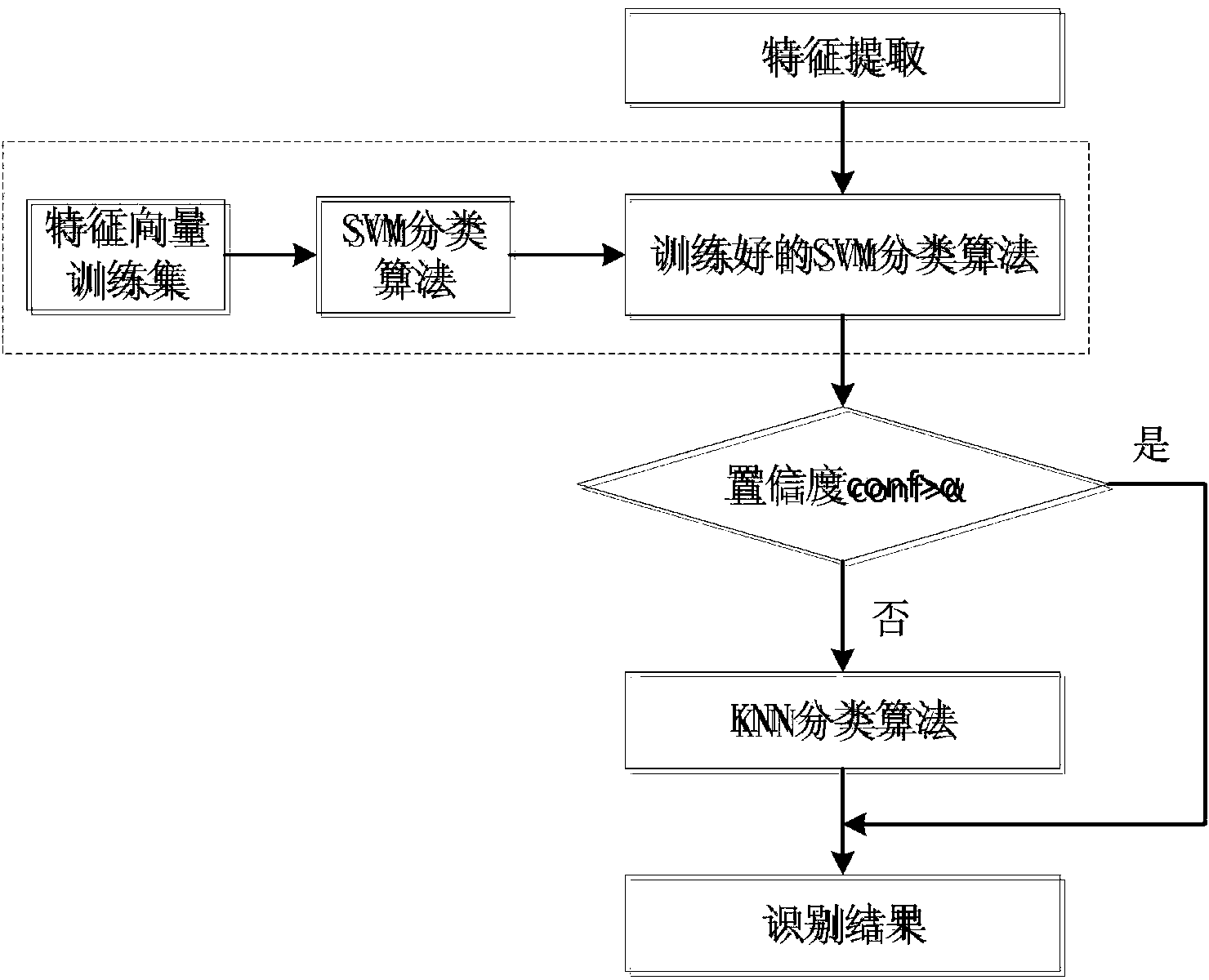Exoskeleton walking mode identification method based on electromyographic signals
An electromyographic signal and walking mode technology, which is used in character and pattern recognition, instruments, computer parts, etc., can solve the problems of not mentioning common road condition information recognition, increasing the difficulty of information collection, and being unfavorable for technology promotion and application.
- Summary
- Abstract
- Description
- Claims
- Application Information
AI Technical Summary
Problems solved by technology
Method used
Image
Examples
Embodiment
[0085] The myoelectric signal sensor model adopted in this embodiment is MyoScan, and the used myoelectric electrode is a disposable three-point differential input myoelectric electrode with non-drying conductive gel, which is matched with the MyoScan myoelectric signal sensor. The model number is MSP430F2274. One end of the myoelectric signal sensor is connected with the myoelectric electrode through the electrode buckle, and the other end is connected with the single-chip microcomputer fixed on the exoskeleton through the wire.
[0086] In the present invention, the M value is determined to be 50ms, and the N value is determined to be 4. The selection of the confidence threshold α is greatly affected by different individuals and varies from person to person. In this embodiment, the confidence threshold is determined by performing multiple experiments on the data of the tested personnel. α = 0.65. Among them, the KNN classification algorithm mainly relies on the limited surr...
PUM
 Login to View More
Login to View More Abstract
Description
Claims
Application Information
 Login to View More
Login to View More - R&D
- Intellectual Property
- Life Sciences
- Materials
- Tech Scout
- Unparalleled Data Quality
- Higher Quality Content
- 60% Fewer Hallucinations
Browse by: Latest US Patents, China's latest patents, Technical Efficacy Thesaurus, Application Domain, Technology Topic, Popular Technical Reports.
© 2025 PatSnap. All rights reserved.Legal|Privacy policy|Modern Slavery Act Transparency Statement|Sitemap|About US| Contact US: help@patsnap.com



